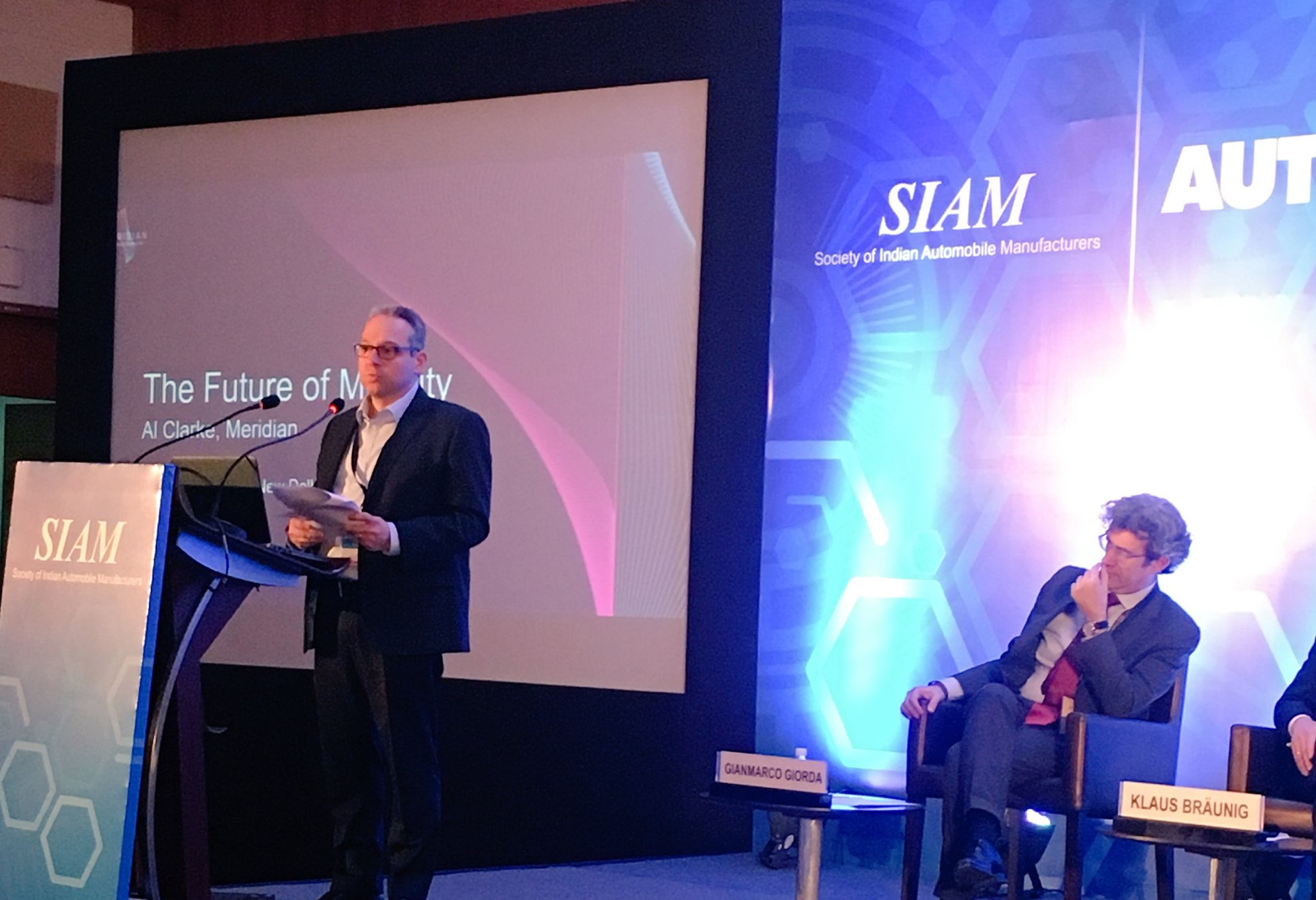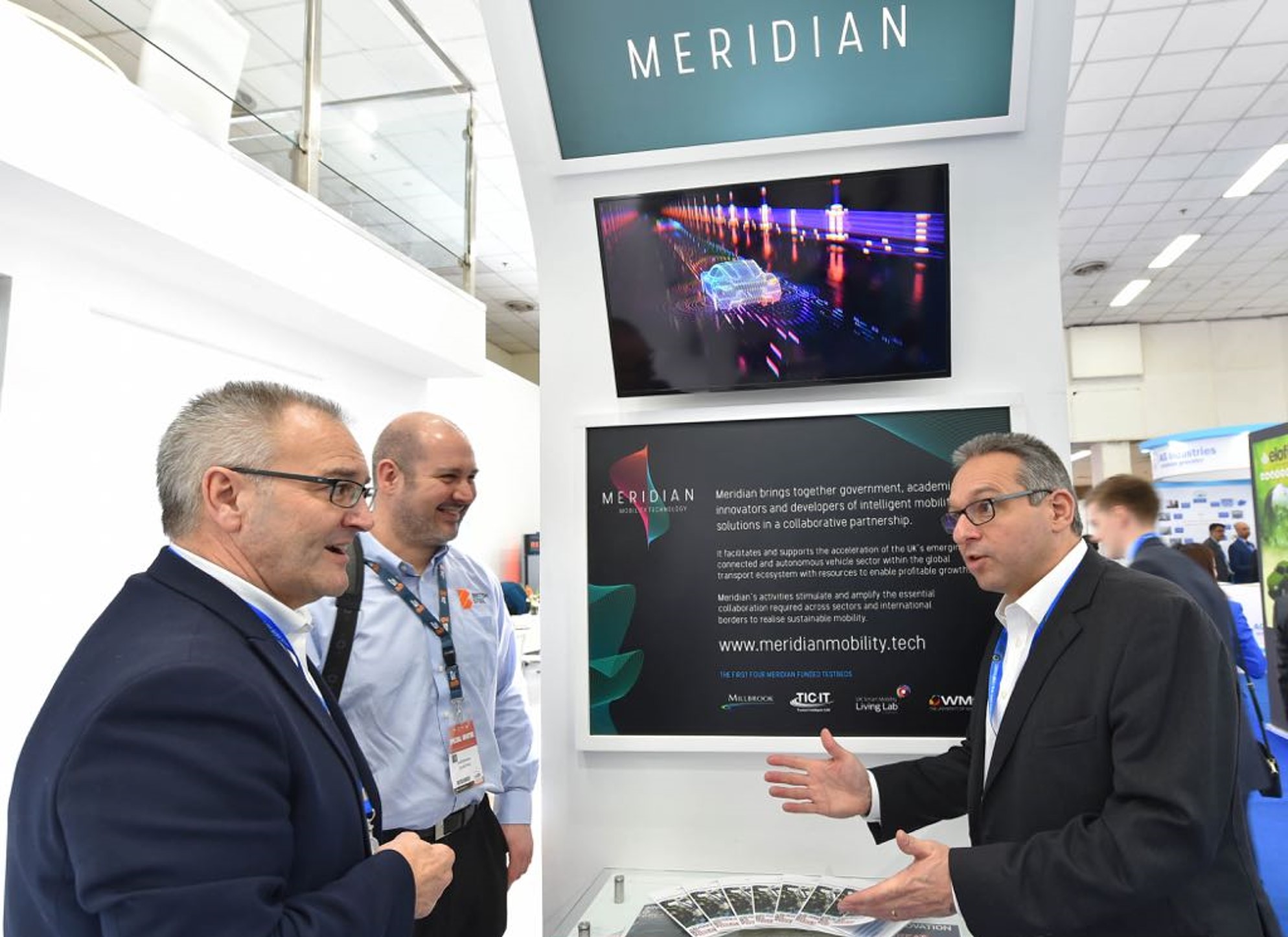This month’s international Future of Mobility conference in New Delhi showcased the diversity of national approaches to the challenge of delivering commercially viable CAV solutions.
Organised by the Society of Indian Automobile Manufacturers (SIAM) during the 2018 Auto Expo, the event brought together speakers from Canada, China, Germany, India, Italy, Japan and the UK (represented by Meridian) along with delegates from across the world including Malaysia, Singapore and the USA. The key focus was to look at national strategies rather than individual company or organisation plans.
Two Key Themes Emerged
Recognising and enabling the new ‘CAV sector’ rather than ‘automotive plus new technology’
One of the single biggest challenges for the success of CAV adoption is the recognition that no single sector (or country or company) can deliver the solution in the traditional hierarchical development process. The automotive sector has led the development of vehicles for more than a century where the status quo has the OEM leading (controlling?) a supply chain to deliver the product. The development and adoption of CAV technology is fundamentally different and whilst there is a vehicle platform upon which the technology is developed, the CAV solution requires collaboration between equal partners across key sectors working together, not simply acting as suppliers to a vehicle manufacturer.
This is a significant challenge for all parties, requiring a change in strategy delivered through a fundamentally different approach to working together. Change of this magnitude is not easy to embrace in traditional sectors but is essential for successful delivery of CAV solutions.
Discussion during the conference suggested that where nations have recognised the need to collaborate in developing a new ‘CAV sector’ with clear public commitment and policy alignment (Japan, Singapore and the UK) they are able to move swiftly to support innovation.
In Japan the long term strategy is focused around the societal benefits of CAV adoption, embracing multiple sectors from health to tourism. In the UK through the creation of a government department (CCAV) and the creation of Meridian we have policy and delivery aligned to enable multiple sectors. Singapore has recently aligned policy to enable real world testing of CAVs for students and older residents.

National strengths and opportunities
Each nation has areas of deep expertise which have traditionally defined their role in the global automotive sector. As we move forward with CAV there is a new opportunity to combine the known skills in automotive, with expertise from other sectors (academia, artificial intelligence (AI), cyber security, infrastructure, law, telco, etc) to understand the global map of skills and optimise their development.
Italy has extensive experience in telematic deployment as the world’s leading consumer of ‘black box’ insurance combining the automotive, telco, finance and insurance sectors in a successful case study of new technology collaboration. India is a leader in manufacturing and will soon be in the top three global volume producers of vehicles, supported by a growing young workforce. Germany continues to be a hub of technology production, whilst Canada leverages fuel cell expertise.
In the UK we believe that our testing and development capabilities can offer an effective ecosystem for the rapid introduction and adoption of CAV. We have world leading expertise in cyber security and our rich heritage with respected academic institutions continue to be a global magnet for students and organisations wanting to access the thought leadership, innovation and collaborative developmental approach to help bring solutions forward.

Moving Forward
There is no shortage of events to attend on the topic of connected and autonomous vehicles (Google suggests 56 million if you search) as we aim to find the right people and organisations with which to engage. At Meridian we’re developing a calendar of events to try and offer signposting and opportunities which facilitate discussion and enable the development and testing of CAVs. We’re also developing an ‘international club’ to bring together countries into a community where we can share best practice and learnings which support the optimal route for us to follow.
The event in India provided a timely opportunity to focus on the best way forward and thanks to all who participated and the SIAM for organising and inviting us to speak. I will try to put the link up to videos of the presentations – watch this space.
In the meantime if you would like to join our community and keep in touch with (and contribute to) our work, please sign up and we’ll keep you posted.
Al Clarke
23 Feb 2018


